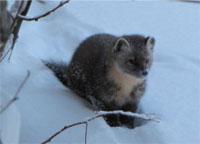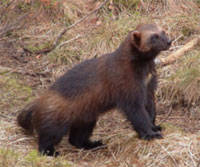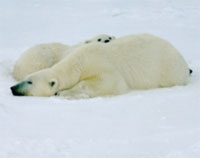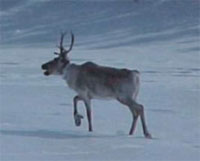| Information Sheet | Status Report | Recovery or Management Plan | Federal Recovery Documents | |
|---|---|---|---|---|
| American Marten | Available (505 KB) | Available | Available (2.7 KB) | – |
| Polar Bear | Available (456 KB) | Available | Available (913 KB) | – |
| Wolverine | Available (577 KB) | Available | Available (387 KB) | – |
| Woodland Caribou in Labrador | Available (123 KB) | Available | Available (7.2 MB) | – |
American Marten (Newfoundland Population) |
||
| Martes americana atrata | Vulnerable (2023) | |
| The American marten (Newfoundland Population) is small tree-dwelling carnivore and member of the weasel family. It has a slender body with short limbs and a long, bushy tail. Its fur is soft and dense, yellowish brown, darker on the tail and legs and lighter on the belly. It has a pale buff patch on its throat. The American marten, also known as the pine marten, Newfoundland marten, or marten cat, is one of 14 subspecies in Canada and exists only in insular Newfoundland. Most of the population occurs in the areas of Little Grand Lake, Red Indian Lake, Glover Island, Main River, and Terra Nova National Park. However, marten populations are starting to expand back into their historical range throughout Newfoundland.The species was downlisted from Threatened to Vulnerable in 2023. More information: Habitat Availability and Population Size for American Marten (Martes americana atrata) on the Island of Newfoundland |
 |
|
Wolverine |
||
| Gulo gulo | Endangered (May 2003) | |
| The wolverine, a native mammal to Labrador, resembles a small bear with a bushy tail. It has long, dark brown fur, with two yellowish stripes starting at the head and meeting at the rump. It can weigh between 15 and 25 kg, and is the largest mustelid (member of the weasel family) in the province. The wolverine’s eastern population is thought to range throughout northern Québec and most of Labrador. Historically wolverine were trapped throughout most of Labrador; however numbers of animals trapped declined early in the 20th century. There have been no confirmed records in Labrador since the 1950s, although there continue to be occasional unconfirmed sightings. Contact the Endangered Species Program |
 |
|
Adobe® Acrobat® Reader software can be used for viewing PDF documents. Download Acrobat® Reader for free.


